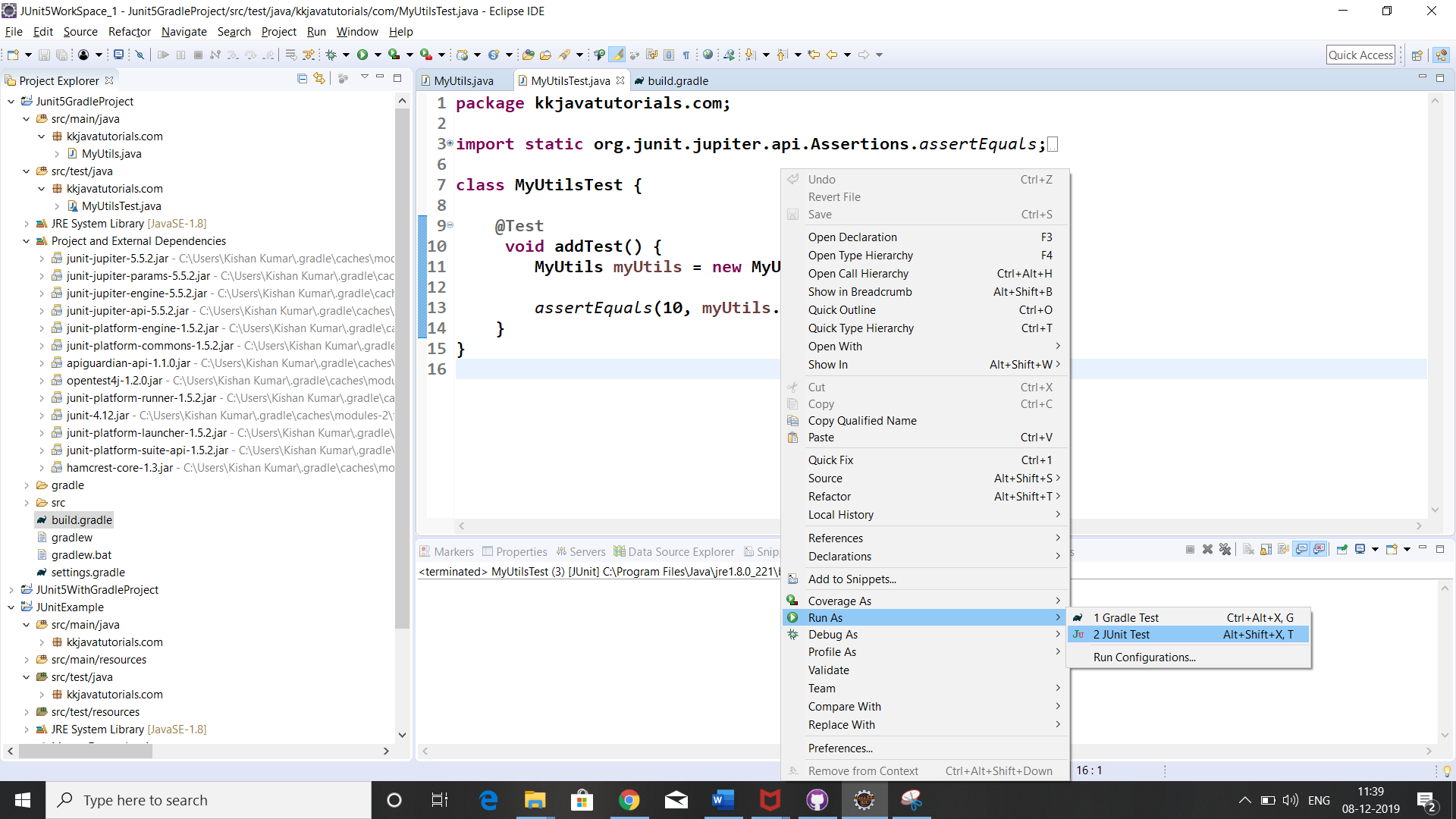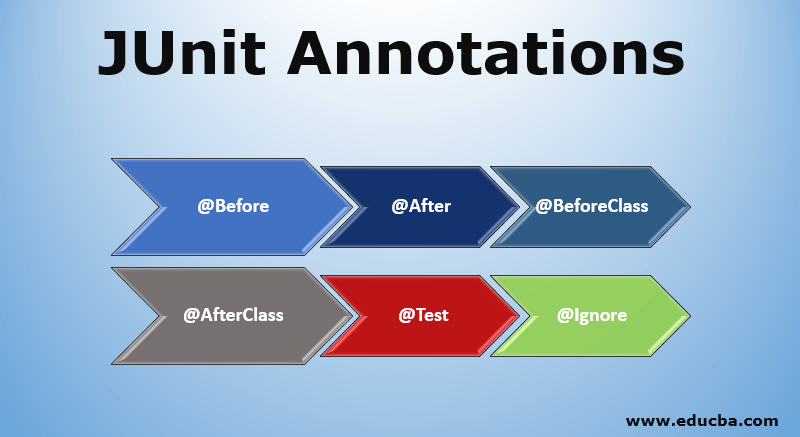

- #Junit 5 annotations how to
- #Junit 5 annotations manual
- #Junit 5 annotations software
- #Junit 5 annotations code
First, it forces you to think about the business problem you are trying to solve. There's a twofold purpose to writing tests before writing your code. Run all of your tests and observe the new test succeeding.įigure 1 shows this TDD lifecycle.Run all of your tests and observe the new test failing.

Test-driven development is defined by the following lifecycle: It is a test-first approach that aims to improve the quality of your applications.
#Junit 5 annotations software
This video will guide you through different parallel parameters in JUnit testing, including methods – execute test methods in separate threads and classes – to execute test classes in separate threads.Test-driven development (TDD) is a software development process that interweaves coding, testing, and design. So, if you’re curious to know more about performing parallel testing with JUnit 5 and Selenium, this video will help you get started.

We can also get the video of each run to find the issue if a test fails. The annotation defines that the annotated method is parameterized where the annotation is used to provide the method name, which is used as a source of parameter values.Īlso read – JUnit Parameterized Test For Selenium Automation With ExamplesĪt last, the browser() method, which is the method source, has the browser names as the arguments.Īfter execution, we will get logs as below:Īs we can see, three tests are executed in parallel on three different browsers where they took around 60 seconds to execute. The LambdaTest remote Selenium Grid initiates the execution based on the arguments defined in the capabilities. The annotation defines the parallel mode in JUnit 5.
#Junit 5 annotations code
Three tests will run in parallel in the above code on the mentioned browser OS combinations. We will be executing this test case on the following browsers, versions, and platform combinations using LambdaTest remote Selenium Grid: Validate successful login by “Welcome – LambdaTest” message.Validate the page title is “Most Powerful Cross Browser Testing Tool Online | LambdaTest.”.In this section of the JUnit 5 Mockito tutorial, we will take a simple example to demonstrate parallel testing with Mockito and JUnit 5: You can also add dependencies to your existing Maven or Gradle project.Īlso Read: Run JUnit Tests From Command LineĪdd the following dependencies in your pom.xml:
#Junit 5 annotations manual
The second best way is to download the artifacts using a manual approach and add them to the classpath. The preferred way of installing Mockito is to declare a dependency on mockito-core with a build system of choice. Mockito is available in two versions: mockito-core (which contains only the core of Mockito, and mockito-all (which contains all modules). When you use Mockito in your unit tests, you will need to download the jar file and place it in a path that your build system can find. However, you can also go through the Selenium JUnit tutorial to check out the basics of JUnit, from writing your first test to running tests in Selenium with examples.Īlso Read – What is Selenium? Mockito Installation
#Junit 5 annotations how to
In case you are starting with JUnit, look at this article on how to setup JUnit environment for your first test?. In this JUnit 5 Mockito tutorial, we will use Mockito with JUnit for performing Selenium automation testing. The main purpose of using a dummy object is to simplify the development of a test by mocking external dependencies and using them in the code.Īs per my experience, you should mock objects in unit tests when the real object has a non-deterministic behavior or the real object is a callback function or the real object is yet to be implemented. Mock objects are dummy objects used for actual implementation. Mockito is an open-source test automation framework that internally uses Java Reflection API to create mock objects.


 0 kommentar(er)
0 kommentar(er)
